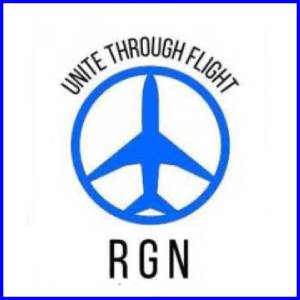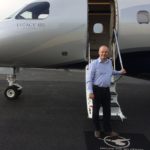 “The key to overcoming discrimination is to never doubt yourself. Many people have told me I’ll never be able to do what I want to do or be who I want to be. But I have never once believed them. I let my actions speak for me, and my actions so far say that I can.” So says 16-year old Brooklyn Shepard, a student at T. Wingate Andrews High School Aviation Academy in Guilford County, North Carolina.
“The key to overcoming discrimination is to never doubt yourself. Many people have told me I’ll never be able to do what I want to do or be who I want to be. But I have never once believed them. I let my actions speak for me, and my actions so far say that I can.” So says 16-year old Brooklyn Shepard, a student at T. Wingate Andrews High School Aviation Academy in Guilford County, North Carolina.
Aleiah Martin, also 16, studies alongside Shepard. Through their example, the girls are challenging assumptions about race and gender, as they work to become pilots and aviation professionals.
“As a young black woman in aviation it can be difficult to find representation,” Martin confides. “It can be easier for me to overcome discrimination because it motivates me to inspire other minorities like me.”
Indeed, according to Sisters of the Skies, an organization committed to supporting future black aviators, professional black women pilots represent less than ½ of 1% of the total professional pilot career field.
T. Wingate Andrews High School Aviation Academy, which provides options for engineering, piloting and maintenance training, is working to help change those statistics.
Started in 2009 with a grant to turn Andrews into a STEM high school, the Aviation Academy in 2016 expanded into operational shops, a classroom and a flight simulator room housing 15 flight simulation devices and a full-size simulation, explains David Mayers, director of the Aviation Academy.

Martin and Shepard in the Andrews Aviation Academy flight simulator. Image: Andrews Aviation Academy
Following the pilot pathway, Martin and Shepard have access to Guilford Technical Community College in their Junior year and may attend pilot ground school there after they become Seniors. Both girls see gaining their private pilot’s license as a step on a much longer journey.
“My goals include earning a bachelor’s degree in professional aeronautics from Elizabeth City State University and becoming a certified flight instructor and commercial pilot,” explains Martin. “My ambition then is to create an organization that will inspire and teach minorities about the wonders of aviation. It would provide scholarships and mentors, free flying lessons, and discovery flights to help when cost holds people back.”
“Cost is the most challenging part of my career choice,” she admits. “I need more than 40 hours to gain the first qualification I need to become a pilot. Flying lessons typically cost over $200 an hour, so that’s close to $10,000 just for the first of many certifications, without including equipment and testing fees. The estimated cost to transition from Private Pilot to Airline Transport Pilot is $100,000 or more and most airlines require or prefer a bachelor’s degree, adding an estimated $60,000. I plan to apply for scholarships and to network to help with expenses.”

Aleiah Martin already has more than 30 hours dual flight time and hopes to gain her Private Pilot License ‘before the end of 2024’. “I started flying in a 2021 Cessna and enjoyed its technology,” she says. “I plan to one day purchase a Cessna 172 Skyhawk with Garmin avionics.” Image: Andrews Aviation Academy
Shepard, meanwhile, aims to achieve an Airframe and Powerplant License after graduation. “Then I want to get a degree in aerospace engineering and my private pilot license – I guess you could say I want to do it all,” she says.
And so it seems. Asked which aircraft she would most like to fly, Shepard explains that since the Space Shuttle is no longer a possibility then it must be Lockheed Martin’s F-22 Raptor.

Brooklyn Shepard says: “I love aviation, but it can be extremely frustrating when I’m not immediately the best at it. Sometimes you may have to do something 100 times over until you get it, but it’s worth it in the end.” Image: Andrews Aviation Academy
Aside from the inspiration they’ve found from teachers and instructors, the students have strong models.
Shepard looks to Story Musgrave, “a man with six degrees, who went from being a Marine to a decorated astronaut”, and Mary Jackson, NASA’s first black female engineer.
Martin chooses Angel Hughes. “A co-founder of Sisters of the Skies, she has inspired me to create my own organization for minorities interested in aviation and shown me people like me can and do fly.”
In aviation, concludes Shepard, “People don’t care if you’re black, white, or green. So long as you can fly good anything else is irrelevant. I want to inspire girls who look like me that they too can reach for the stars.”
Related Articles:
- Kincade’s Only Up documentary helps women soar in aviation
- Armless pilot inspires others to see ability instead of disability
- Record-setting American aviator Shaesta Waiz on ignoring the naysayers
- Turkey’s first female wing commander seeks to inspire others
- Engineer Dana Kirchmar seeks to inspire girls to pursue STEAM
Featured image credited to Andrews Aviation Academy













